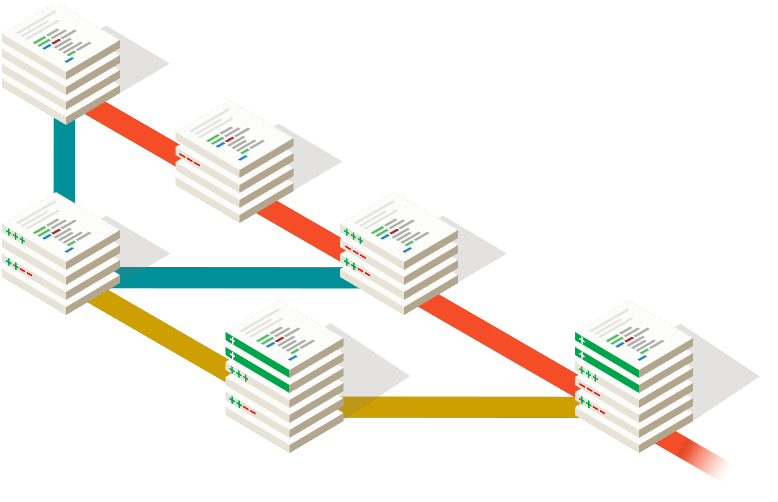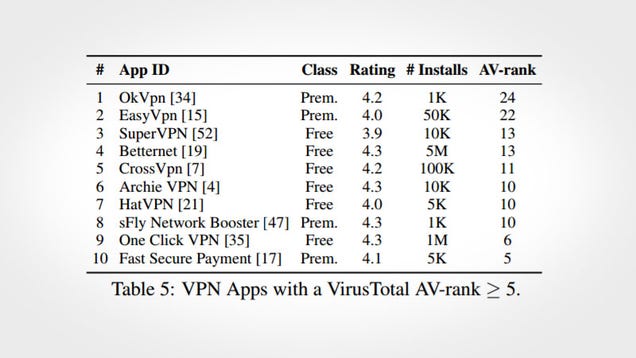
When it comes to Jane Austen’s love scenes, there is the letter scene in Persuasion, and then there is everything else.
Persuasion may not have the sparkling charm of Pride and Prejudice or the satirical bite of Emma, but it is Austen’s most deeply felt, melancholy, and beautiful novel. It is the last novel she completed before her death, and it’s written in a different mode than the rest of her books: It’s more lyrical than the rest, and a little sadder and less aggressively witty.
It also has an older heroine. Persuasion’s Anne Elliot is 27 and unmarried, making her by Regency-era standards a spinster — and as we are told in the book’s opening pages that “her bloom had vanished early,” her prospects look dim. She seems doomed to spend her life waiting on her buffoonish, appearance-obsessed father and spendthrift elder (and also unmarried) sister, with perhaps the occasional dubious reprieve in the form of a visit to her married younger sister’s home to look after her nieces and nephews.
Anne was engaged once, to a man named Frederick Wentworth when she was 19, but her well-meaning friends and family convinced her to break off the engagement: Wentworth had no money and few prospects, and everyone was convinced that a pretty and wealthy young heiress like Anne could do better. Eight years later, Wentworth has joined the navy and made his fortune. When he sees Anne for the first time since the end of their engagement, he declares her — in perhaps the most blisteringly painful insult of any Austen novel — “so altered that he should not have known her again.”
Over the course of the book, Anne and Wentworth come back together, culminating in the much-celebrated scene in which Anne stands in a pub talking with a friend as Wentworth, at the next table, writes her a love letter. It’s perhaps the most swooningly romantic moment in all of Austen’s novels, and it works so well in part because of its impeccable structure, and in part because it fits so nicely into Anne’s larger character arc.
Anne Elliot’s personal storyline is about learning that she is allowed to feel feelings
Anne is an odd creature for an Austen heroine: She is not sparklingly witty, like Pride and Prejudice’s Lizzie Bennet; nor is she acerbically rational like Sense and Sensibility’s Elinor Dashwood, endearingly silly like Northanger Abbey’s Catherine Morland, or brashly confident like Emma’s Emma Woodhouse. Her closest cousin might be Mansfield Park’s fading and timid Fanny Price (nobody’s favorite Austen character), but Anne has more backbone than Fanny does, and her narration is more thoughtful. She is quiet and self-contained; she would easily fade into the background if not for the exquisite craftsmanship of her inner monologue.
Anne sees the world with as much intelligence and insight as Lizzie Bennet does, but where Lizzie is by turns delighted and outraged by her neighbors’ foibles, Anne is either gently amused or gently saddened. She is too tired and too worn down by life to express her emotions as vividly and passionately as Lizzie does; she has learned instead to react to the world by shrugging.
That’s part of what makes the emotional arc of Persuasion so effective: Over the course of the book, you watch Anne slowly learn how to express her feelings once again — at first painfully, with her profound mortification over Wentworth’s return, and then more happily, as she and Wentworth gradually fall back in love with each other. And that arc reaches its culmination in the letter scene.
Persuasion’s letter scene builds its tension slowly, piece by piece
In Persuasion’s penultimate chapter, Anne and Wentworth find themselves in the same room of a pub together, Anne to meet a friend and Wentworth to write a letter. The scene that ensues is a master class in slowly building romantic tension and the catharsis of relief, and in how to marry a romantic arc to a character arc.
As soon as she sees Wentworth, Anne is at once overwhelmed with emotions so intense and so confused and inexpressible that they are almost claustrophobic: She is “outwardly composed” but inwardly “deep in the happiness of such misery, or the misery of such happiness.” She cannot describe what she is feeling even to the reader; she certainly cannot express it to Wentworth. Wentworth, meanwhile, is engrossed by his writing, and a whole flock of other characters sit around gossiping.
The tension mounts slowly at first. Anne continues to sit perfectly still and silently in a torrent of feelings, and Wentworth continues to write, and neither of them so much as glances at the other until the conversation turns to the topic of engagements, and how important it is that children listen to their parents’ advice in such matters. Then:
Anne found an unexpected interest here. She felt its application to herself, felt it in a nervous thrill all over her, and at the same moment that her eyes instinctively glanced towards the distant table, Captain Wentworth’s pen ceased to move, his head was raised, pausing, listening, and he turned round the next instant to give a look — one quick, conscious look at her.
For Austen, who tends to keep her characters restrained even during their most passionate speeches — and for Persuasion, which has been starving Anne Elliot for genuine emotional contact for hundreds of pages by this point — that “quick, conscious look” is the equivalent of a gunshot.
The tension is high now. Anne can no longer hear the conversation — “it was only a buzz of words in her ear, her mind was in confusion.”
As Anne struggles to maintain her composure, Wentworth’s friend Captain Harville draws her into conversation, and they begin to discuss the different ways in which men and women fall in love. Women, Anne explains, “live at home, quiet, confined, and our feelings prey on us,” which makes it almost impossible for them to fall out of love. But men “have always a profession, pursuits, business of some sort or other, to take you back into the world immediately,” which allows them to easily forget a relationship as soon as it ends.
It’s a quietly radical defense of female emotions in a world that dismisses them as so much hysteria, and — more pertinently to this scene — an indirect avowal of Anne’s own emotions. After spending an entire novel trying to present herself as someone who feels nothing and is bothered by nothing, she’s at last beginning to lay claim to the idea that she is allowed to feel things.
The speech stops Wentworth cold. He goes so far as to drop his pen, which in this refined and elegant world is more or less the same thing as climbing on top of the table and screaming. And as he finishes his letter, he is in “great haste,” his papers “scattered” and his attitude “forgetful” and “agitated.” It’s in a positive torrent of emotion, with the scene at its most tense, that he at last slips the letter to Anne, “with eyes of glowing entreaty fixed on her.”
The tension is unbearable, both for the reader and for Anne, newly awakened to her own emotions. “Anything was possible,” she thinks feverishly, “anything might be defied rather than suspense.” When she opens the letter, she is not doing anything so passive and so ladylike as reading; instead, “her eyes devoured” its contents:
I can no longer listen in silence. I must speak to you by such means as are within my reach. You pierce my soul. I am half agony, half hope. Tell me that I am not too late, that such precious feelings are gone forever. I offer myself to you with a heart even more your own than when you broke it almost eight years and a half ago. …
The letter is such an effective climax — both to this particular scene and to the novel itself — that it almost doesn’t matter that Anne and Wentworth have not, technically, spoken to each other, or that their true reunion won’t come for another scene. The reunion scene is beside the point; it’s denouement. It’s the letter scene that matters.
The letter scene keeps plot mechanics and character arcs moving in perfect harmony
Part of what makes Persuasion’s letter scene so swooningly romantic is that it’s structured like the revelation scene in a murder mystery, where the detective lines up all of the suspects and explains exactly who the killer is and how they did it.
We have a problem — in this case, not a dead body with no clear killer, but two people who clearly should be together but are not. We know what the solution should be. In a murder mystery, it’s for the killer to be revealed and face punishment; here, it’s for the two lovers to recognize that they are both in love and reunite.
And the scene keeps inching us toward that end, only to frustrate everything: There are Anne and Wentworth in the same room, but unable to speak to each other because Wentworth is writing a letter. There are Anne and Wentworth recognizing the significance of their past relationship, but unable to speak of it explicitly while in front of other people. There is Anne at last recognizing the strength of her feelings out loud — but can Wentworth hear her? What is he writing? The frustration mounts and mounts until Anne can finally, at last, open the letter, and the reader gets the same satisfaction as knowing whodunit in a murder mystery: At last, all is revealed.
But what really elevates Persuasion’s letter scene, beyond its mastery of plot mechanics, is how carefully it marries Anne’s character arc to the love story of Anne and Wentworth. Anne’s quiet repression is the great problem of Persuasion, her willingness to put her own feelings aside for the convenience of others. It’s that repression that leads her to break off her first engagement to Wentworth at her family’s urging, and that, in the novel’s opening pages, seems to have committed her to a life of self-effacement, of uncomplainingly doing nothing but what is best for other people.
The great relief of the letter scene is that, for the first time, Anne is allowed to recognize that she has emotions, that they are real and strong and valid. That personal breakthrough enables the romantic breakthrough, and creates the immense catharsis of not only the romantic resolution but also the resolution of Anne’s personal arc. She has, at last, solved the novel’s problem and come into her own.
![]()
![]()
![]()
![]()
![]()
![]()
![]()
![]()
![]()
![]()
![]()
![]()
![]()
![]()
![]()


/cdn0.vox-cdn.com/uploads/chorus_asset/file/8015467/fredgraph.png) (
(/cdn0.vox-cdn.com/uploads/chorus_asset/file/8015645/Screen_Shot_2017_02_20_at_3.15.03_PM.png) (Energy Information Administration)
(Energy Information Administration)



























